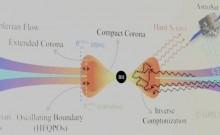![Ancient Skulls Discovered in Spain Reveals Neanderthal-like Features [Representational Image]](https://data1.ibtimes.co.in/en/full/318401/ancient-skulls-discovered-spain-reveals-neanderthal-like-features-representational-image.jpg?w=450&l=50&t=20)
Scientists have recently uncovered skulls in Spain, which reveal that the oldest-known humans resembled Neanderthal that lived around 430,000 years ago.
Analysis of the skull showed similar characteristic with primitive humans suggesting that human evolution was more complex than previously thought, explained the researchers.
The discovery comes from unearthing a cave at the site of Sima de los Huesos, (Pit of Bones) in Spain that contains the largest collection of primitive human fossils in the world.
The researchers examined fossils of 17 human skulls. Earlier, in 1993, researchers examined three skulls recovered from the same site. The latest finding however, clears up the controversy surrounding the age of the Sima fossils, said study co-author, Lee Arnold, a geochronologist at the University of Adelaide.
Previous study considered that the fossils were more than 530,000 years old, but the age of the fossil did not match with the morphology and genetic evidence, explained Arnold.
In order to clear the age disputes, the team of researchers employed six dating methods that could be used on various samples such as bone, sediments and teeth and other such skulls.
"When we focused on [four of the six] techniques they all converged on 430,000 years ago. Their dating provides a solid age for the first appearance of Neanderthal features in the fossil record. One of the aims of the study was to also test a theory, known as the accretion model, on how Neanderthals evolved," ABC Science quoted Arnold as saying.
The analysis of the 17 skulls supports that Neanderthal-like features are present in the jaws and teeth, while the upper skulls appears to be from primitive Homo heidelbergensis.
"Heidelbergensis is defined by the jaw and at Sima the jaw is completely different, so it isn't Heidelbergensis but it isn't classic Neanderthal either. The paper [suggests] it might be a different species but ... it will be debated and this is the opening of this process. A picture is emerging of human evolution which is way more complex than has been considered over the past couple of decades," he explained.
Another key factor is that the 17 fossil skulls show strong homogeneity of traits, which differentiates in morphological features with 430,000 years ago fossils recovered from other archaeological sites in Europe.
"There are sites in southern Serbia about the same age but no Neanderthal features whatsoever are found in the fossils there. This suggests different types of human species were running around Europe at the same time," Arnold added.
Till date, over 6500 human fossils from around 28 individuals have been uncovered from Sima de los Huesos with almost intact skeletons, although it requires reconstruction. Some Spanish excavators believed that the site was a traditional burial ground.
The finding was published in the journal Science.















